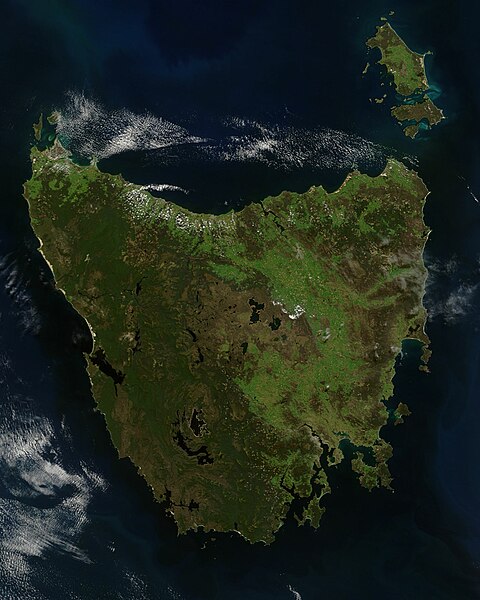Tasmanian Wilderness World Heritage Area
The Tasmanian Wilderness World Heritage Area, abbreviated to TWWHA, is a World Heritage Site in Tasmania, Australia. It is one of the largest conservation areas in Australia, covering 15,800 km2 (6,100 sq mi), or almost 25 per cent of Tasmania. It is also one of the last expanses of temperate wilderness in the world, and includes the South West Wilderness.
Lake Judd from Mount Eliza, Southwest National Park
Dry sclerophyll forest in Tasmania
Lagarostrobos franklinii: a slow growing tree found only in the wilderness area
A Tasmanian Aboriginal chief of the Port Davey tribe
Tasmania is an island state of Australia. It is located 240 kilometres (150 miles) to the south of the Australian mainland, separated from it by the Bass Strait, with the archipelago containing the southernmost point of the country. The state encompasses the main island of Tasmania, the 26th-largest island in the world, and the surrounding 1000 islands. It is Australia's least populous state, with 569,825 residents as of December 2021. The state capital and largest city is Hobart, with around 40 percent of the population living in the Greater Hobart area. Tasmania is the most decentralised state in Australia, with the lowest proportion of its residents living within its capital city.
Tasmania from space
Tessellated pavement, a rare rock formation on the Tasman Peninsula
1807 engraving by French explorer Charles Alexandre Lesueur shows seafaring Aboriginal people and a large canoe on the eastern shore of Schouten Island.
Tasmania is named after Dutch explorer Abel Tasman, the first European to sight the island, in 1642.








